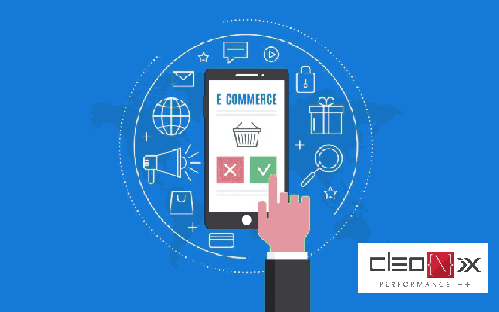
WordPress 4.9 was the second and last outstanding WordPress release of 2017 with some exciting fresh features and enhancements.
1. New Theme Browsing Experience in The Customizer: WordPress 4.9 brings various improvements to the customizer. These changes offer a major user experience and a new set of tools for developers. You can also browse and search WordPress.org themes and install them directly from customizer.
2. Save and Schedule Changes in The Customizer: WordPress 4.9 brings change sets to theme customizer. It is like post revisions but for your theme changes. You can store changes without applying them.
3. New Gallery Widget: This new widgets allows you to create a native WordPress gallery and add it to your WordPress sidebar or any widget ready areas.
4. New Code Editing Experience: WordPress allows you to add HTML/CSS code at various places like theme editor, custom CSS panel, or in custom HTML widget.
Previously, these areas were plain text boxes and didn’t look or act like a proper code editor.
WordPress 4.9 has changed that by adding syntax highlighting, code suggestions, and auto-completion into those areas.
5. Short code in Sidebar Text Widgets: WordPress didn’t allow short code execution in text widgets. Users had to explicitly enable short codes in text widgets. WordPress 4.9 will finally change that and users will be able to add short codes in text widgets out of the box.
6. Add Media Button in Text Widget: WordPress 4.9 has fixed this by adding the ‘Add Media’ button in the text widget. Now you can easily select or upload an image directly inside the text widget.
Source: http://www.wpbeginner.com/
Read more

Bounce rate (sometimes confused with exit rate) is an Internet marketing term used in web traffic analysis. It represents the percentage of visitors who enter the site and then leave (“bounce”) rather than continuing to view other pages within the same site. Bounce rates can be used to help determine the effectiveness or performance of an entry page at generating the interest of visitors.
1. Improve your content’s readability: One cause that your target client might quit your site is a lack of readability. User experience begins when your content is readable and legible. Use short & simple word with proper typography & formatting.
Here are some ways to improve your content’s readability:
- Appropriate use of headers
- Frequent subheadings
- Suitable images
- Bulleted lists
2. Avoid popups: In 2013, 70% of users said that they found irrelevant popups to be annoying. That probably hasn’t changed – most people still hate pop ups.
3. Optimize page load time: According to data from Radware, a connection speed delay of just 500 milliseconds can result in an increase in “peak frustration” of more than 26%, and a decrease in engagement of 8%.Further, slow-loading pages are among the leading causes of shopping cart abandonment for ecommerce retailers. Amazingly, only 2% of the world’s leading 100 ecommerce websites have mobile sites that load fully in less than five seconds on mobile devices – and one-fifth take almost eight seconds to load completely, an almost criminally long time for sites that live and die by conversion rate optimization.
4. Use sidebar widgets and promotions sparingly: Ecommerce pages are an ideal vehicle for offering relevant content, offers, and other material to your audience. However, cramming the digital margins of your content with ads, offers, award emblems, and other crap is a surefire way to overwhelm your visitor and tempt them to bounce.
5. Target Keywords With High-Value Traffic: Keywords can make or break your content marketing campaign. If you want to improve search performance, start targeting high-value keywords, because that’s where the high-value traffic is.
Source: neilpatel.com , wordstream.com
Read more

E-Commerce sector is so huge and the business industry needs a suitable platform for reaching more audience. Android and iPhone both are ever escalating platforms that people are using at a larger scale.
1. 24*7 visibility to your customers:
In a survey, a figure has been come out which states that around 60% business strategists have developed mobile apps for their respective industry sectors. If you want to target a larger audience then you should quickly move towards app development.
2. Mobile ecommerce apps boost customer loyalty:
People who decide to download your mobile app at first show a higher level of investment in your brand. They come ready to buy, while mobile site visitors mostly access your store to check details or look up contact information. In addition, customers spend three to four times more hours in apps than on mobile sites, and access them intentionally. According to research by Criteo, mobile app users are twice as likely to return to your store within 30 days compared to shoppers who access your website in a mobile browser.
3. Decrease response time:
A major concern for any internet user is how fast a website or an app performs. The time required for a mobile app to complete an action is significantly lower than for a website because applications store their data partially on a mobile device. In addition, users are able to set their default preferences in apps, which lets an app load only the content that the customer wants. This allows users to be more proactive and save time.
Source: agileinfoways.com ,rubygarage.org
Read more
 AJ 14, Salt Lake, Sector 2, Kolkata - 700091 |
AJ 14, Salt Lake, Sector 2, Kolkata - 700091 |  743 Virginia Ave NE Atlanta, GA 30306
743 Virginia Ave NE Atlanta, GA 30306


